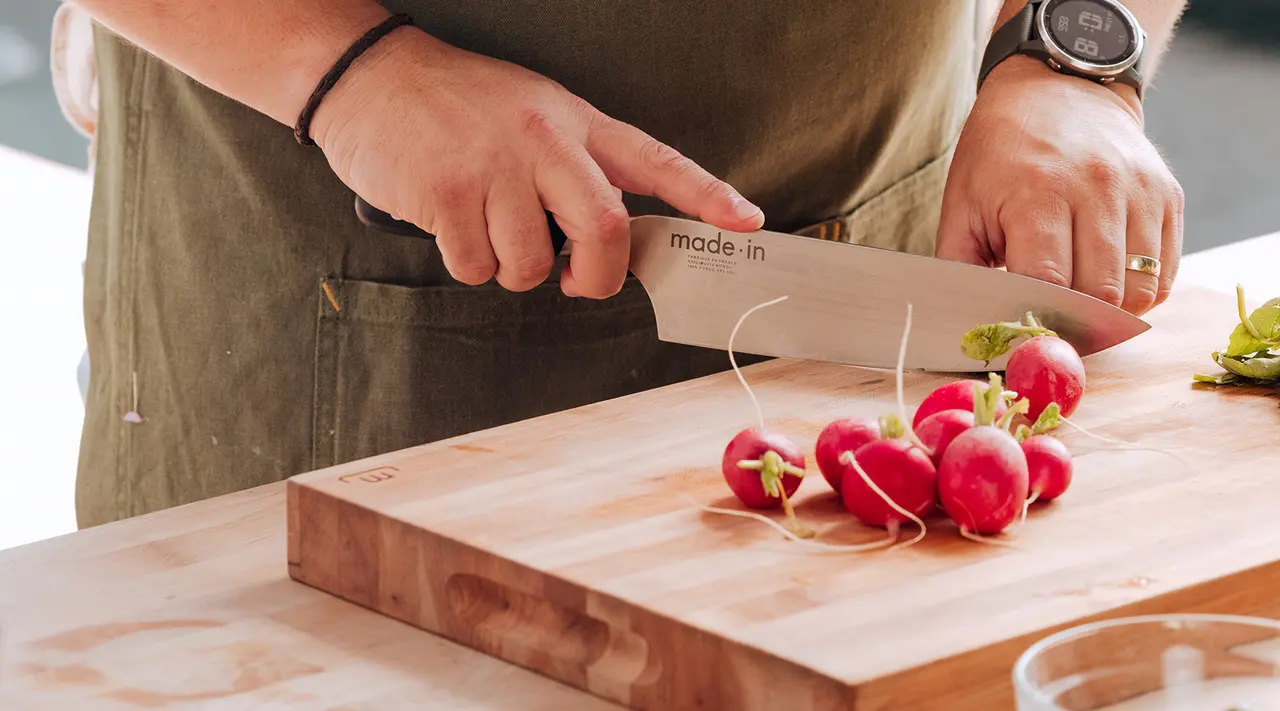Within the realm of culinary arts, the selection of kitchen tools plays a crucial role in determining the quality and efficiency of your tasks. Among the vast array of available options, German knives with wooden handles are celebrated for their precision, craftsmanship, and rich tradition. These knives not only boast visual appeal but also carry a storied history of knife-making that spans centuries. For culinary professionals, recognizing the significance of these knives can greatly enhance their skills in the kitchen.

The Craft of German Knife-Making: A Tradition of Quality
The heritage of German knife-making is deeply entrenched in history, with its roots tracing back to ancient times. The town of Solingen, often called the 'City of Blades,' has long been at the heart of this craft. Renowned for its superior steel and unparalleled craftsmanship, Solingen has supplied knives that are cherished globally. The fusion of German steel and skilled craftsmanship yields knives that are not only exceptionally sharp but also enduring and trustworthy.
Why Opt for Wooden Handles?
When considering German knives, the choice of handle material is vital. Wooden handles offer a classic aesthetic that merges durability with comfort. They provide a secure grip that enhances precision while cutting. Furthermore, wooden handles are favored for their capacity to absorb moisture, minimizing the risk of slipping during use. This quality makes them an excellent option for culinary professionals who value safety and comfort in their tools.
Benefits of German Knives with Wooden Handles
Here are several compelling reasons culinary experts favor German knives with wooden handles:
- Durability: Known for their solid construction and longevity, German knives made with high-quality steel and wooden handles can endure the demands of a bustling kitchen.
- Balance: The weight distribution of these knives is carefully crafted to offer optimal balance, essential for precise cutting and reducing fatigue during prolonged use.
- Versatility: Whether chopping, slicing, or dicing, these knives seamlessly tackle a wide range of culinary tasks.
Care Tips for Wooden Handles
To maximize the life of your German knives with wooden handles, proper maintenance is essential. Regularly oiling the wooden handle helps prevent it from drying out and splitting. Moreover, hand washing is crucial, and minimizing exposure to water will protect both the blade and handle. For further care instructions, refer to this knife care guide.
Comparing German Knives to Other Styles
The discussion surrounding German versus other knife styles, including Japanese, is often of great interest among culinary professionals. While both styles offer distinct advantages, German knives are typically preferred for their robustness and ability to tackle tougher tasks. To delve deeper into this topic, check out this comparison of knife styles.
The Importance of Steel in German Knives
The type of steel utilized in German knives plays a pivotal role in their performance. Typically crafted from high-carbon stainless steel, German knives strike an ideal balance between hardness and corrosion resistance, ensuring they maintain their sharp edge for extended periods and need less frequent sharpening.

Frequently Asked Questions
What distinguishes German knives with wooden handles?
German knives are famed for their sturdy build, precision, and durability. The addition of wooden handles not only elevates their elegance but also ensures a comfortable grip, making these knives perfect for professional use.
How can I care for the wooden handle of my German knife?
Regularly applying oil and minimizing water exposure are crucial for maintaining the wooden handle. Hand washing and promptly drying the knife can also prolong the handle's lifespan.
Are German knives superior to Japanese knives?
Both German and Japanese knives have their unique strengths. German knives are often preferred for their durability and ability to handle demanding tasks, while Japanese knives excel in precision and sharpness. The choice between the two ultimately depends on personal preference and the specific requirements of the task at hand.
If you're interested in the historical context behind German knife-making, you may find this overview of German knife brands quite informative.


























